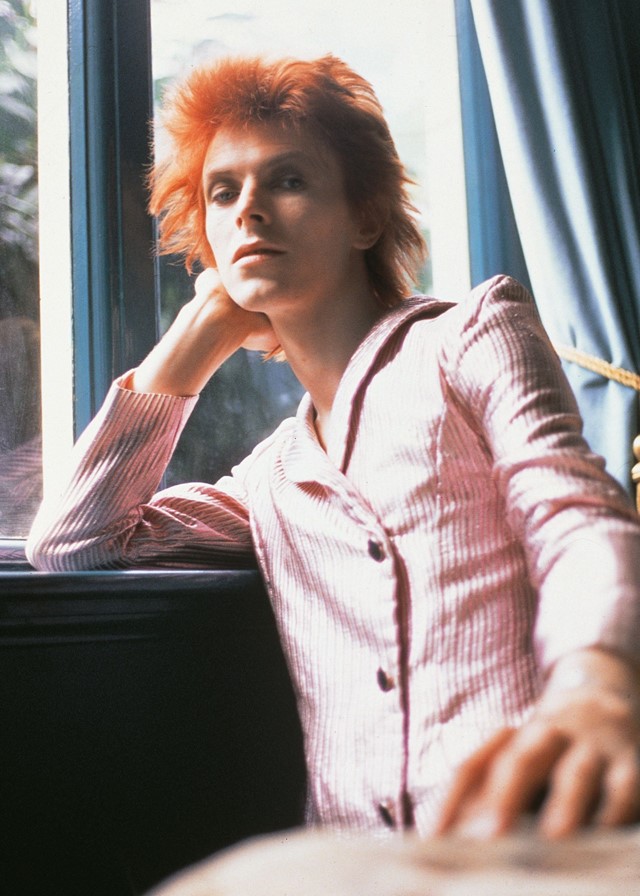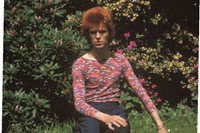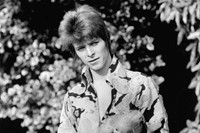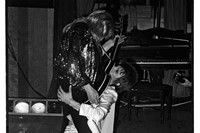A new edition of the late photographer’s photo book, Moonage Daydream, will celebrate the 50th anniversary of Ziggy Stardust and the Spiders from Mars
To earthlings in the early 1970s, Ziggy Stardust truly seemed to have arrived from Mars. With a flame-red mullet, otherworldly make-up, and outfits that crossed A Clockwork Orange with the florid prints of the Liberty catalogue, David Bowie’s earliest alter ego crash-landed with his eponymous concept album in 1972, emerging from the wreckage as a bona fide rock and roll icon. At the time, however, some critics saw the musician’s glam rock reinvention as a flash in the pan, failing to anticipate – or comprehend – his lasting impact on fashion, music, and sexual politics decades down the line.
Luckily for us, however, Mick Rock was among the early followers who recognised the potential of Bowie’s alien superstar. From 1972 to 1973, the late photographer traced the rise and fall of Ziggy Stardust across countless stages, film sets, and hotel rooms. The resulting photographs – gathered in the newly re-released photo book Moonage Daydream – capture everything from the sweaty euphoria of live shows with the likes of Lou Reed and Iggy Pop, to intimate moments of reflection toward the end of the era, as Bowie began to feel “exhausted and completely bored with the whole Ziggy concept”.
“I was the only photographer with a true passion for the Ziggy image,” said Rock on his unique perspective on the character. “Was I uniquely intuitive, very lucky, or just plain spaced out? Probably a bit of all three.”
First created by Bowie and Rock in 2002, Moonage Daydream was originally published as a signed, limited edition collector’s item. The book has since become a sought-after artefact among the musician’s biggest fans, largely due to the insightful annotations of David Bowie himself, which accompany 600 of Rock’s images. Throughout these annotations, Bowie’s voice is instantly recognisable, reminiscing on the early 70s, and addressing the mythology that rose around his space age persona in later decades with a wry sense of humour.
On one page, for example, he sets the story of his haircut straight under an androgynous photoshoot from his flat in Haddon Hall. “I’ve read in different accounts that the Ziggy cut came from a number of different source, or was designed by a local hairdresser,” he writes. “Absolute tosh!” In reality, he explains, the cut and colour was “a complete lift” from a fashion magazine cover featuring a model in Kansai Yamamoto – a key influence on the wild maximalism of the era.
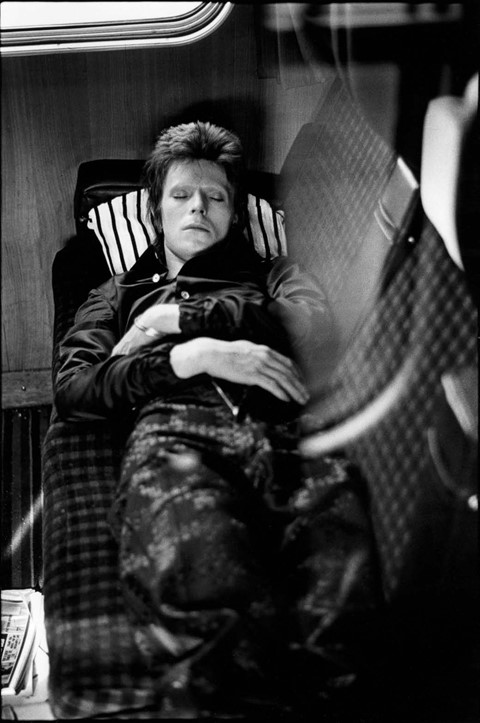
Elsewhere the book includes notes scribbled on paper, or written by typewriter, as well as setlists, newspaper articles, pencil sketches, and early drafts of lyrics and music from Aladdin Sane. Even these often bear traces of Bowie’s idiosyncratic artistry. “I would literally draw out on paper with a crayon or felt tip pen the shape of a guitar solo,” he remembers. “The one in Moonage Daydream, for instance, started out as a flat line that became a fat megaphone-type shape and ended as sprays of disassociated and broken lines. Mick Ronson [guitarist for the Spiders from Mars] could take something like that and actually bloody play it, bring it to life.”
Collected as a whole, the various elements of Moonage Daydream create a patchwork portrait of Bowie as Ziggy Stardust that fans will be able to piece together like a puzzle. It’s not exactly an autobiography, as Bowie explains in the foreword – instead referring to his captions as a “series of impressions” in response to Rock’s photos – but it’s about as close as we’re going to get.
A new edition of Moonage Daydream: The Life & Times of Ziggy Stardust will be published to mark the 50th anniversary of Ziggy Stardust and the Spiders from Mars, arriving on June 14, 2022 via Genesis Publications.
